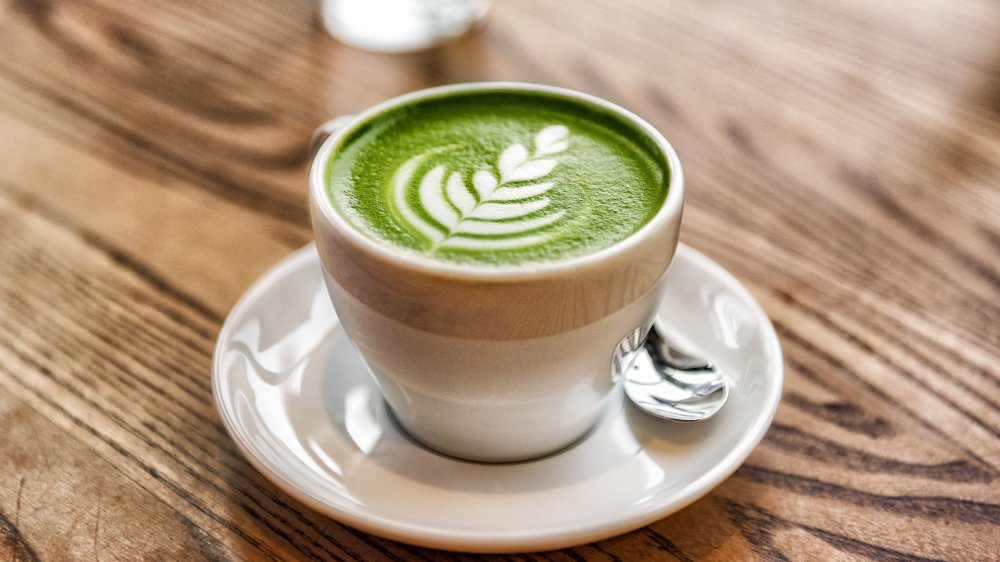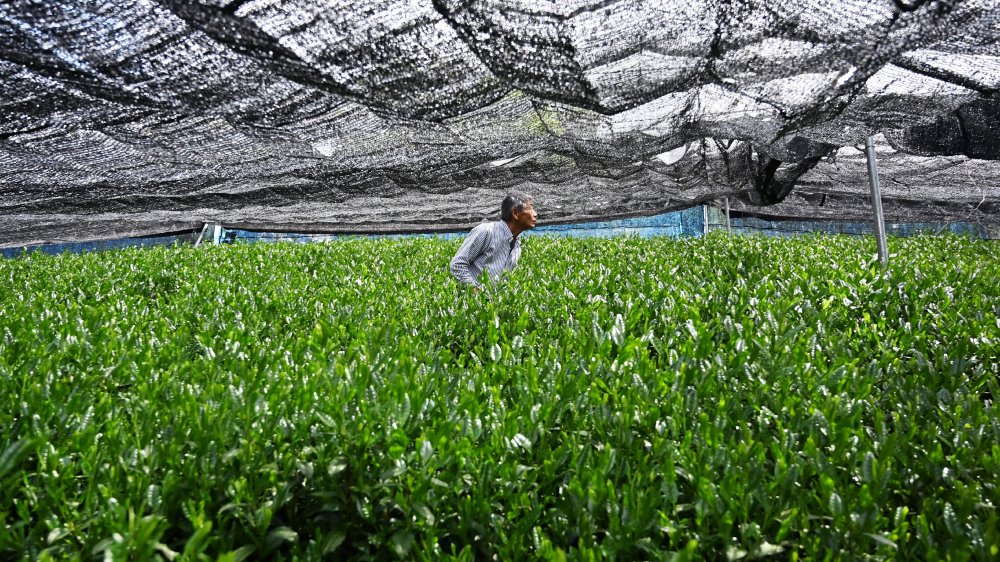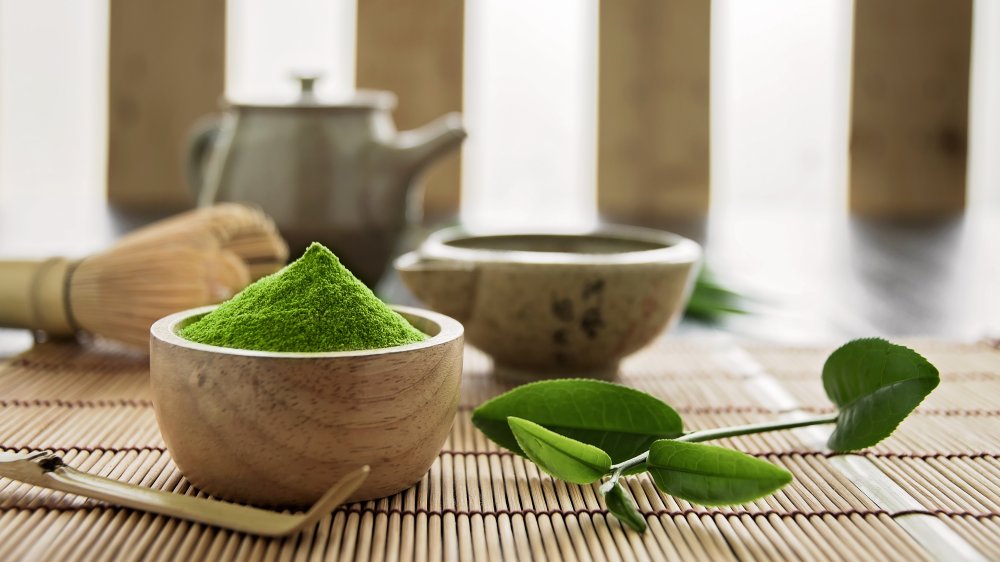The Untold Truth Of Matcha
Just about every tea in the world is made by pouring hot water over its leaves to brew, drinking the liquid, and discarding the leaves, but this one is different. Matcha is a green tea, unique to Japan, and is made by grinding young tea leaves into a powder and then whisking that powder with hot water to make a tea. Its bright green color is natural — matcha leaves come from tea bushes that are grown in a shady area to boost its levels of chlorophyll and L-theanine (via Eater), which Healthline says this amino acid makes you feel relaxed without feeling drowsy.
When leaves are harvested, workers segregate the leaves, which will yield two different teas — if leaves are rolled they are made into a tea called Gyokuro, while flat leaves become Tencha. The stems and veins of the Tencha leaves are then removed, and if the tea is being made traditionally, the leaves are ground between two granite stones into a fine powder. The entire process is done in the dark, and for as long as an hour, which helps keep nutrients intact (via Time).
Matcha may have many health benefits
Like many green teas, matcha contains a group of antioxidants known as catechins. It is especially high in EGCG (epigallocatechin gallate), which some tea fans say has cancer-fighting effects. Green tea is also said to have properties that can help prevent heart disease, type 2 diabetes, and cancer, but in reporting these benefits, Time quotes population-based studies that compare the results of groups that drink tea against those that don't.
These studies say there is a link between tea and good health, and while this link has not been proven, there is evidence to show that green tea is good for both reducing high blood pressure and levels of LDL (bad) cholesterol. Matcha was not directly studied, but because it is a type of green tea, they may share the same benefits.
For tea drinkers who are sensitive to caffeine, it may be good to know that matcha seems to have more caffeine than regular green tea.
Matcha is at the heart of traditional Japanese tea culture
While matcha is enjoyed in just about every form today — in sweets ranging from cakes to mochi, in cocktails, and as a latte from Starbucks — it is also important to know that matcha plays an important role in Japanese culture. The tea ceremony, also known as sado, or chado, is a formal way to prepare and present tea to guests.
The actual ceremony itself can take a few hours, and can begin with a multi-course tasting meal or kaiseki, followed by a bowl of thick tea, then a bowl of thin tea. But today's tea ceremonies are much shorter, and are limited to the presentation of the thin tea. There are a few schools in Japan today that offer lessons on the art of the tea ceremony, and their differences can be seen in the hand movements that they use in preparing the tea today (via Japan Guide).


